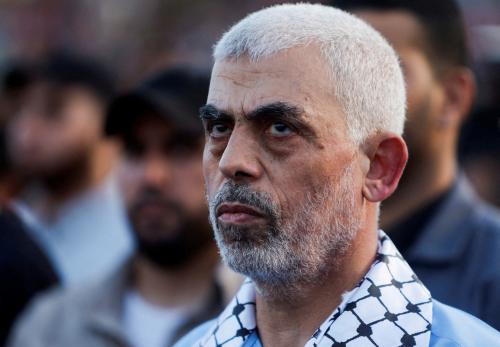As the night sky around Baghdad once again lit up with bombs dropped from American and British aircraft, Saddam Hussein must have wondered whether the new Bush administration was bent on finishing off the job left undone by the old. For now, he need not worry. Friday night’s attack on command and communication centers and air defense facilities, including some just outside the Iraqi capital, constituted more of the same as far as U.S. military action in the region is concerned. It does not in any way indicate a new resolve to oust Hussein from power.
Ten years ago, almost to the day, President George W. Bush’s father led a formidable international coalition to oust Hussein and his military from Kuwait. At the helm then were Secretary of Defense Dick Cheney and Gen. Colin Powell, chairman of the Joint Chiefs of Staff-both now back in power as vice president and secretary of state, respectively. Although the Persian Gulf war was a great success, it left Hussein in power.
Now, a two-term presidency later, Hussein is still there—his programs to build weapons of mass destruction are no longer subject to inspection, the economic sanctions against him are badly frayed, and his political control at home remains absolute. And for some years now, Iraqi’s air defenses have played a cat-and-mouse game with American and British airplanes that are patrolling the northern and southern parts of Iraq.
The result has been a war of attrition, for Iraq at least. Iraq challenges the allied air cap by darting airplanes in and out of the no-fly zones and using ground radar to illuminate allied planes patrolling the zones. The United States and Britain respond by bombing isolated sites-like the facilities attacked on Friday.
The original purpose of these no-fly zones was to limit Saddam’s ability to threaten the Shiite population in the south and the Kurds in the north, to make him pay a price—in prestige, if nothing else—for impeding the work of weapons inspectors, and possibly to embolden internal Iraqi resistance forces to step up their efforts to unseat him.
But 10 years after these zones were first established, Washington and London have little to show for this low-level war. Nor is it clear that maintaining the zones is important to our overall objective in the region—which is to make sure Hussein does not reconstitute his capability to produce weapons of mass destruction and to keep him firmly within a box so that Iraq’s neighbors are secure and its internal minority populations are as safe as possible.
On the other hand, at a time when U.S. armed forces overseas may be overextended, the value of continuing this operation is questionable. Today, some 25,000 troops are deployed in the Persian Gulf region. Most are there to carry out no-fly-zone operations, which are being conducted by about 60 aircraft in Turkey, some 130 jets on the Arabian peninsula, and another 70 or so Navy planes operating from a carrier in the Persian Gulf.
Given the high cost and low value of maintaining these zones, especially in the south, it may be time to reconsider the operation. Of course, the United States should still keep aircraft in the region to deter Iraqi moves against its neighbors and its own minority population groups.
But the numbers of those aircraft could be reduced and their mission could be redefined—away from maintaining constant airborne patrols over Iraq, and instead to a mission of limited no-fly-zone operations coupled with robust attacks against any future Iraqi aggression or in response to any evidence of renewed Iraqi pursuit of weapons of mass destruction.
A change in U.S. policy along these lines could cut the American military presence in the Persian Gulf region to perhaps 15,000 troops. At a time of growing concern about the frequency and extent of American overseas deployments, a cut of this magnitude (which could include a 50 percent reduction in Air Force fighters) would go a long way toward solving the Air Force’s problems.
Having made evident that the United States is not going away and is, indeed, prepared to bomb key targets like those struck on Friday, the Bush administration is in an ideal position to institute a policy change along these lines. It would address the concern, repeated by President Bush just this last week, that our military is overextended.
Yet, it would maintain a robust deterrent against what matters most—Iraqi attacks against Kuwait or Saudi Arabia or large-scale internal repression of Kurds and Shiites. And we would remain fully prepared to launch devastating attacks should any evidence emerge that Hussein had again acquired nuclear, chemical, or biological weapons.



Commentary
Op-edOverextended in Iraq
February 18, 2001